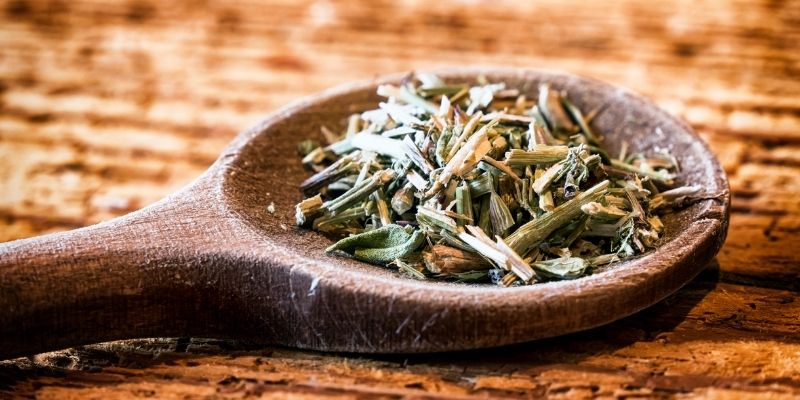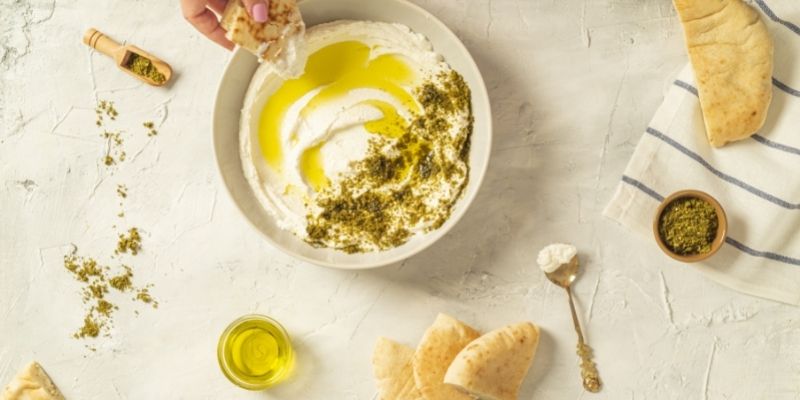Hyssop, Hyssopus officinalis, is an aromatic perennial plant with a mentholated and slightly camphorated flavour. It belongs to the large Lamiaceae family, just like mint, thyme, and rosemary, to name a few of the most famous members. Its stunning blue flowering occurs in summer, between June and August. It is a highly melliferous plant, beloved by insects.
In cooking, it is typically used in blends like Herbes de Provence, alongside thyme and rosemary, for example, because on its own, hyssop has a rather strong taste. Its use is most common around the Mediterranean, where it originates. Like other aromatic herbs, it has been renowned since antiquity for its many medicinal properties.
Discover our tips for harvesting, drying, storing, and using hyssop.
When to Harvest Hyssop?
The parts used, whether in cooking or for relieving minor ailments, are the leaves and flowering tops—that is, the flowering part of the plant with a few leaves.
If you wish to use fresh leaves, pick them as needed. A very small amount is enough to flavour dishes.
For harvesting with the aim of drying and storing, always choose a dry day and pick preferably in the morning after the dew has evaporated. This ensures the leaves contain the highest concentration of active compounds and minimal moisture, which promotes good drying and prevents mould. Using pruning shears, cut the upper two-thirds of the stems you wish to harvest.
- The leaves are best picked before flowering, as this is when they contain the most active compounds.
- The flowering tops are harvested in summer, throughout the flowering period. Be careful not to over-harvest leafy stems to avoid stressing your hyssop plant.

How to Dry Hyssop?
Air Drying
Once harvested, dry hyssop in the shade in a dry, well-ventilated place. At this stage, you can leave the stems whole, as this makes handling easier.
Place the leaves and flowers in a single layer, without touching, on newspaper or kraft paper, like the paper bags used by vegetable vendors. Avoid absorbent paper, as the plant may stick to it while drying. Ideally, drying should take a few days, but it may take over a week depending on air humidity.
Ensure the hyssop parts are drying in dim light. The flowers should retain their beautiful blue colour after drying. If the leaves have turned black or mouldy, discard your harvest and start again.
Drying is complete when the leaves crumble between your fingers.
Oven Drying
For the impatient or when weather conditions are unsuitable for natural drying (for example, during prolonged rain and high humidity), you can dry your harvest in the oven.
For this, you need an oven with precise temperature control. The goal is not to cook the plant.
- Set the oven to 45°C.
- Bake for 2 to 3 hours, keeping the door slightly ajar to allow moisture to escape.
- Check if drying is complete by crumbling a leaf between your fingers. If it doesn’t crumble, return it to the oven and check regularly until fully dried.
Using a Dehydrator
For those with a dehydrator, this is also an option. Refer to your appliance’s manual for the required drying time.

How to Store Hyssop?
For storage, remove the leaves and flowering tops from the stems if not already done. This will save space.
The leaves can be stored whole. However, crushing them offers two advantages:
- Dosing for herbal teas is easier, as it is often measured in spoonfuls of dried plant.
- Coarsely crushed plant material allows better extraction of active compounds due to the increased surface area in contact with water.
For storage, the simplest and most practical method is to place the dried hyssop in a paper bag or a small jar away from light, as light can degrade the plant’s properties.
How to Use Hyssop?
In Cooking
Hyssop is used as a condiment in cooking. Fresh or dried, it is particularly good for flavouring salads. It can also be used to season soups and sauces.
Use it sparingly, as its flavour is quite strong. This is why it is most often used in blends, such as Herbes de Provence.
It is also found in the composition of certain liqueurs.

Labneh, a popular Middle Eastern appetiser made with goat cheese, olive oil, dried hyssop, and pita bread
In Herbal Medicine
Hyssop is used in infusions. Be sure to follow recommended dosages, as it may have side effects for people with nervous disorders. For example, the sale of hyssop essential oil is highly regulated, and its free sale is prohibited due to its neurotoxicity, which can cause convulsions.
The Benefits of Hyssop
A staple in medieval herb gardens, hyssop was used in teas and renowned for its properties:
- Digestive. Hyssop may help reduce bloating and stimulate digestion.
- Expectorant, meaning it helps expel mucus. Useful for wet coughs but avoid for dry coughs, as hyssop can be irritating in such cases.
- Antiseptic.
The infusion can also be used externally. Warm compresses may help treat bruises and minor injuries.
Note that hyssop is contraindicated for children, pregnant women, and people with epilepsy.
For more information on planting and growing this beautiful perennial, check out our guide Hyssop: Sowing, Planting, Cultivation, and Benefits.
































Comments